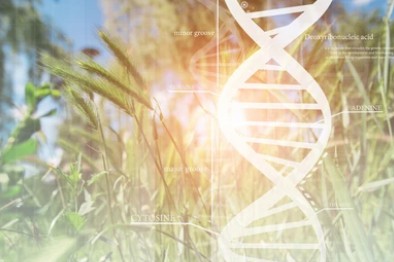DNA is the carrier of genetic information and the material basis of gene expression. Whether it is to study the structure and function of DNA or to conduct genetic engineering research, the DNA needs to be separated and purified first, and the quality of the nucleic acid sample will directly affect the success or failure of the experiment.
Principle

Because plant cells have a cell wall and a high content of polysaccharides in the cells, the general method of extracting eukaryotic genomic DNA is not very effective for plant cells. Cetyltrimethylammonium bromide (CTAB) method is a commonly used method to extract genomic DNA from plant cells. CTAB is a detergent that dissolves cell membranes and it can form complexes with nucleic acids. In high salt solution (0.7 mol/L NaCI) CTAB-nucleic acid complexes are soluble. When the salt concentration of the solution is reduced to a certain level (0.3 mol/L NaCl), it precipitates from the solution, and the CTAB-nucleic acid complex can be separated from the protein and polysaccharide by centrifugation. Finally the DNA is precipitated by ethanol or isopropanol. Since DNA is insoluble in CTAB but soluble in ethanol or isopropanol, it is removed.
Procedures
- Add 10 mL of CTAB separation buffer into a 30 mL centrifuge tube and place in a 60°C water bath to preheat.
- Weigh 1.0~1.5g of fresh leaves, put them in a pre-cooled mortar, pour in liquid chlorine, and grind the leaves. It can be repeated several times until the leaves become a very fine powder and weighed.
- Add the leaf powder directly into the preheated CTAB separation buffer, and gently rotate the centrifuge tube to mix it evenly.
- The samples were incubated at 60°C for 30 minutes.
- Add 700 µL of phenolform and mix thoroughly.
- Centrifuge at 12000 r/min for 2 min, and recover the upper aqueous phase.
- Add 700 µL of chloroform-isoamyl alcohol solution (24:1), and mix thoroughly.
- Centrifuge at 12000 r/min for 2 min, and recover the upper aqueous phase.
- Add 5 µL (10 mg/mL) RNase A and place at 37°C for 1 h.
- Add 700 µL of phenolform and mix thoroughly.
- Centrifuge at 12000 r/min for 2 min, and recover the upper aqueous phase.
- Add 700 µL of chloroform/isoamyl alcohol (24:1) and mix thoroughly.
- Centrifuge at 12000 r/min for 2 min, and recover the upper aqueous phase.
- Add 490 µL of isopropanol and let stand at room temperature for 10 min.
- Centrifuge at 12000 r/min for 15 min, discard the supernatant.
- Wash with 500 µL 70% ethanol and centrifuge at 8000r/min for 2 min.
- Wash with 300 µL 70% ethanol and centrifuge at 8000 r/min for 2 min.
- Let dry in air.
- Dissolve with 50 µL TE buffer.
- Take 1 µL of the lysate for 1% agarose gel electrophoresis. After electrophoresis at 100 V for 30 min, the results were observed under UV light.
Note:
- The mechanical force during the extraction process may break the macromolecular DNA into small fragments. Therefore, in order to ensure the integrity of the DNA, each step of the operation should be relatively gentle and avoid violent vibration.
- If the DNA precipitate is white and transparent and becomes viscous after dissolving, it means that the DNA contains more polysaccharides. You can put the plants in the dark for 24 hours before collecting the samples to achieve the purpose of removing starch.
- Wash the precipitated DNA with 70% ethanol for 2 or more times to remove polysaccharides or salts contained in the DNA.
- The ethanol must be blown dry, otherwise the sample will float during electrophoresis.
- If the sample is used for PCR amplification, it is best to dissolve it in sterilized double distilled water to prevent the components in the TE buffer from affecting the PCR.
Related Services & Products
For research or industrial raw materials, not for personal medical use!
